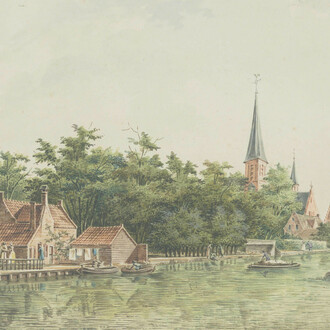On August 29, 2016, the International Geological Congress voted to formally designate this geological era the Anthropocene. This was an important recognition of humans’ tremendous impact on the environment and the enduring consequences of plastic pollution, nuclear tests, mineral and gas extractions among others. The root cause of this revision is the acknowledgement of anthropocentricism, a belief that has been carried from the Enlightenment to the Industrial Revolution and exacerbated through the twentieth century into the very foundation of our neoliberal societies. But recent history demonstrates that the greatest threat to this belief comes in the form of humanity’s own offspring: technology. Our generation is now facing a complex conflict within the contemporary trinity: Humans – Nature - Technology.
The artists brought together in this exhibition address the significant shifts in paradigms of existence that the collide of culture, nature and technology brings forward. Centered around three modes of alteration: Mutation, Transformation and Metamorphosis, this exhibition looks at how movements towards hybridization can free us from the tyranny of anthropocentricism and help us built a project for a brighter future. Between automation and digital networks, the foundations of the econosphere are being strained. New emerging digital economies are compromising the traditional distribution of wealth while challenging the concept of property. The German duo Famed relies on objects of knowledge to reflect on the complex dynamics between humans, nature, and technology and how they impact political decisions in the twenty-first century.
Patrick Bérubé’s work is concerned with recurring human patterns that have historically created conflicts of power. Bérubé’s references are varied – from Heraclitus’s Isis Unveiled to the Golden Mede, science fiction and the wunderkammer. Together they demonstrate a long tradition of human’s reliance on technology to assert its sovereignty over nature.
In contrast, Laurent Lamarche examines how machines borrow from nature. His pieces recuperate a distinct aesthetic of science fiction where machines resemble insects and animals and acquire qualities associated with their referent. It is as if nature metamorphosed into machines, ultimately claiming that they might be one and the same.
In Karine Payette’s work, the desire to control nature results in a particular kind of mutation. Simultaneously amusing and disconcerting, the scenarios she proposes are indicative of the unresolved posture of this complex relationship in public consciousness: nature as both an entertaining commodity and an attitude towards it that could turn it into a potentially threatening entity.
Using 3D printing, Marie-Eve Levasseur transforms the fingerprint smudges on the surface of her iPhone screen into a digital landscape. The Frictional Landscape between You and Me draws from an aesthetic associated with geological models to visualize human relationship as mediated by technology – literally representing a physical space that comes into existence as a result of our interaction with digital devices. While hybridity often spurs discomfort, this exhibition argues that it is nevertheless key to assure a shift from prometheanist dispositions that serves exclusively human interests into a wider consideration that recognizes the interconnectedness of all things, living and inert.
Text by Anaïs Castro (Curator of the exhibition)
















